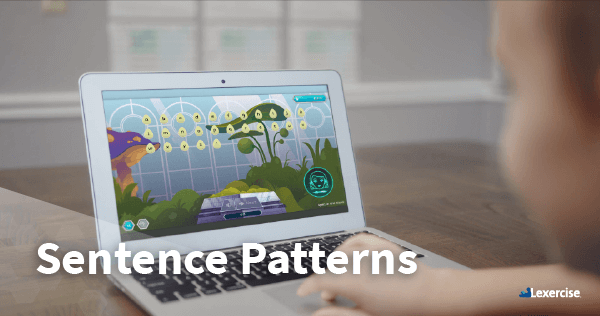Sentence Patterns in English
Written by Sandie Barrie Blackley, Speech-Language Pathologist
Published on April 28, 2022
Readable letters and correctly spelled words are two must-have building blocks for literacy.
But literacy is more than words. To be literate students must be able to read and write sentences and paragraphs.
Writing is one of the most important skills that students develop during their K-12 schooling. Teachers use writing to test what students know. Students who struggle with writing are likely to struggle in school. But even beyond school, people are judged by their writing. In text messages, emails, job applications, and work reports – writing matters! People who have solid writing skills have a huge advantage over their peers!
Writing also helps us learn! Writing improves:
- memory
- critical thinking
- organization
- planning
Helping Struggling Readers with Sentence Patterns
Writing involves letters and words…in sentences! Students often struggle to understand what is and what is not a sentence. They may struggle with writing clear, complete sentences. Terms like phrase, clause, noun, adjective, and adverb don’t make much sense to struggling writers! Before learning terms like those it helps to give students guided practice writing top-notch sentences. This step-by-step plan can help:
- Write a base sentence by naming what is it about (the subject) and the action (the verb).
- Describe the action (add words to describe when, where, why how).
- Develop the action (move the verb phrases around and decide the best arrangement).
- Describe the subject (add words to describe which, what kind, how many).
- Look at each word and decide if there is a better word to use instead.
- Add punctuation, capitalization, and check spelling. Write the final sentence.
For example, a student was asked to write a sentence using this picture prompt.
 Following the 6-steps above the student started with a three-word base sentence, The girl looked.
Following the 6-steps above the student started with a three-word base sentence, The girl looked.
By step 6 the student had expanded the sentence to, The puzzled engineer squinted through the darkness at the flickering light on the distant tower.
When students can write such sentences independently they are ready to learn the eight terms that describe the roles words play in sentences:
-
- Noun
- Pronoun
- Verb (including auxiliary verbs)
- Adjective
- Adverb
- Article
- Conjunction
- Prepositions
These eight parts of speech are the building blocks for all kinds of sentence patterns! Sentences weave words into rich webs of meaning, making sentences a keystone of literacy.
If you’d like to learn more about structured literacy, check out our Professional Courses and make sure you subscribe to our blog below for information and resources on literacy and dyslexia.
Improve Your Child’s Reading
Learn more about Lexercise today.
Schedule a FREE
15-minute consultation



